By Qian Ding, editor of CCTV.com
Chinese calligraphy is the artistic expression of Chinese language in a tangible form. It has been widely practiced in China for around 3000 years and has been highly-esteemed in the Chinese culture sphere.
In order to develop this form of art in a new era, the Beijing Intangible Cultural Heritage Protection Company established special commonweal foundation for Chinese calligraphy, which held the "China Intangible Cultural Heritage Development and Cooperation Forum and Commonweal Event - Development of Calligraphy" on Jan.13, 2018, in Wu Zhou Guest House, Shenzhen.
Around 300 guests were in attendance including Liu Xiaofeng, Vice Chairman of the National Committee of the Chinese People's Political Consultative Conference, representatives of Shenzhen government, China intangible cultural inheritors, calligraphers, painters and entrepreneurs.
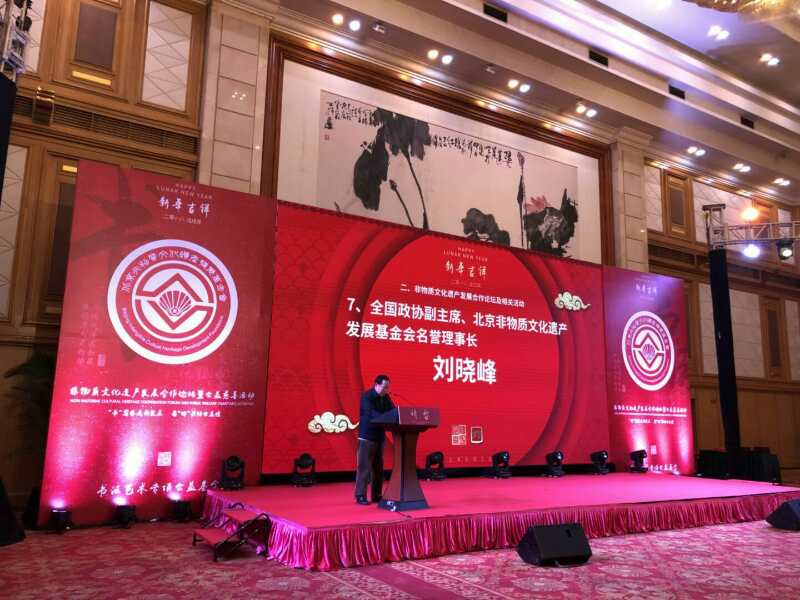
Liu Xiaofeng, Vice Chairman of the National Committee of the Chinese People’s Political Consultative Conference, making a speech in the forum. (Photo by Bo Lu)
Calligraphers and painters, including Zhang Jinjing and Chen Changzhi, representative of intangible cultural inheritors, Shen Jufang, executive director of Beijing Intangible Cultural Heritage Development Foundation, Chen Siguang, as well as others explored the topic of how to inherit and develop China intangible cultural.
In order to show support for China's intangible cultural heritage protections, Jun porcelain masters Wang Xianfeng, Liu Zhongxuan, Li Xinying, Wang Jianwei, Liu Ke, Li Jianfeng, Zhang Zijun, Zhang Jianzhao, Cui Songwei, Zhai Qun and famous calligraphers and painters Zhang Jinjing, Chen Changzhi, Lin Qingping and her husband, Li Duo, Han Mei and Wang Xiutao donated their art works to the Beijing Intangible Cultural Heritage Protection Company.
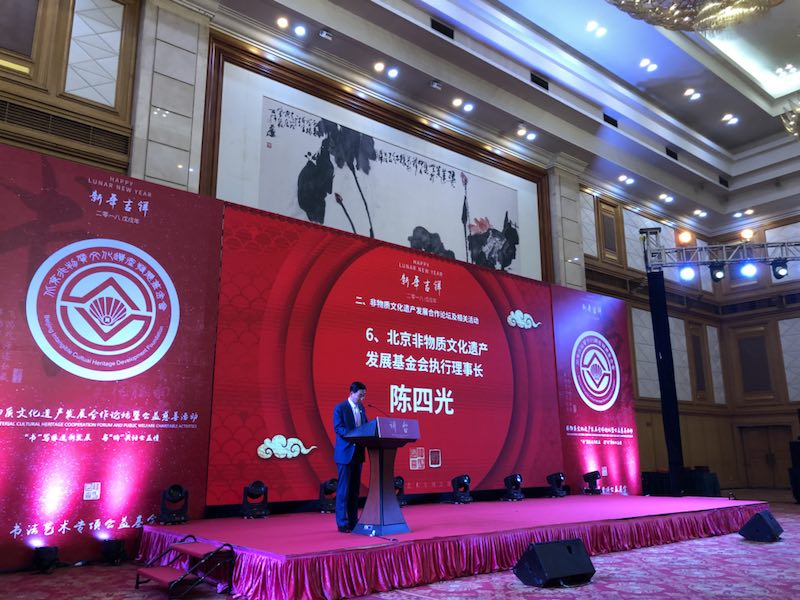
Executive Director of Beijing Intangible Cultural Heritage Development Foundation, Chen Siguang, delivering a speech. (Photo by Bo Lu)
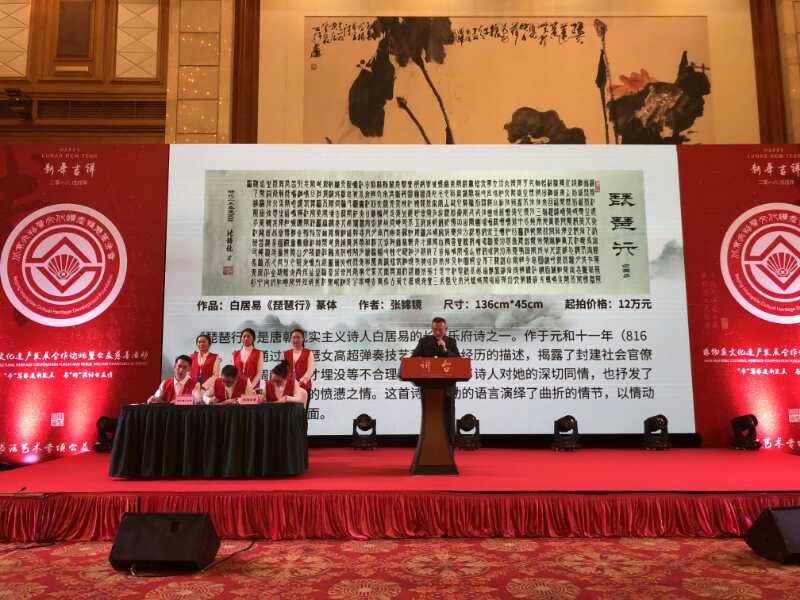
Famous calligrapher and painter Zhang Jinjing, presenting his calligraphy work.
(Photo by Bo Lu)
The charity auction was also held with all the proceeds of the sale to fund calligraphy education in elementary and middle schools of Guangdong and Guizhou Provinces, Xinjiang Uygur Autonomous Region and other parts of China.
In order to promote calligraphy among the younger generation, the Ministry of Education of the People's Republic of China has promulgated "Calligraphy Education Outline for Primary and middle Schools" in 2013. Students from 3rd grade to 6th grade are required to attend a one-hour calligraphy class every week, learn to write Chinese characters properly and appreciate its beauty.
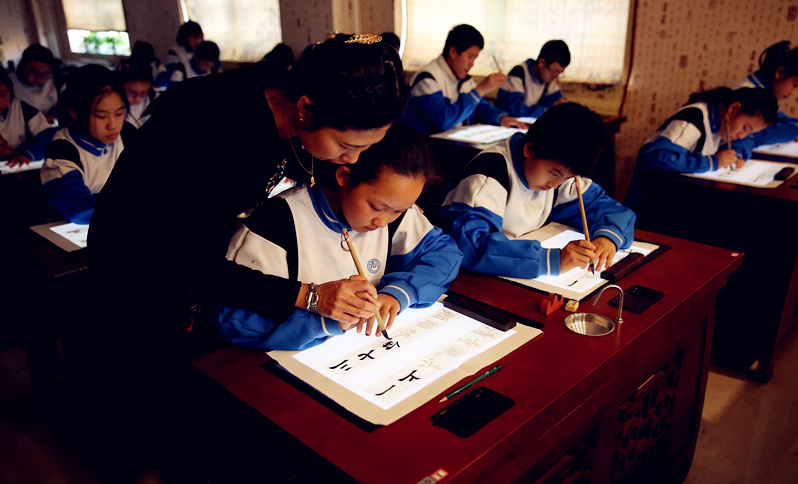
A teacher helping student to practise calligraphy. (Photo from internet)
Calligraphy is one of the highest forms of Chinese art. When Chinese President Xi Jinping and his wife Peng Liyuan visited India in 2014, Peng interacted with a group of local students and taught them how to use a Chinese writing brush.
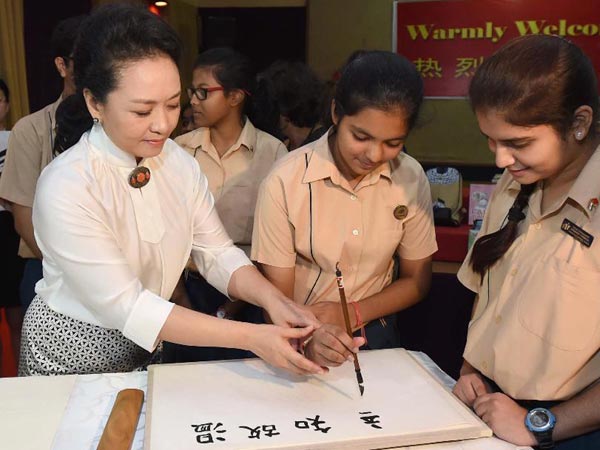
Peng Liyuan teaches students how to use a Chinese writing brush at Tagore International School in New Delhi, India, Sept. 18, 2014. (Photo from Xinhua)
Inheritance and development of Chinese calligraphy in our digital era has become so significant since more people have chosen to use computers, phones to record, instead of handwriting. With the support of organizations such as the Beijing Intangible Cultural Heritage Development Foundation, artists who are dedicated to developing the traditional art, as well as the schools and public who care about intangible culture, we will see a more positive future for Chinese calligraphy.
(The opinions expressed here do not necessarily reflect the opinions of Panview or CCTV.com)

Panview offers a new window of understanding the world as well as China through the views, opinions, and analysis of experts. We also welcome outside submissions, so feel free to send in your own editorials to "globalopinion@vip.cntv.cn" for consideration.
















